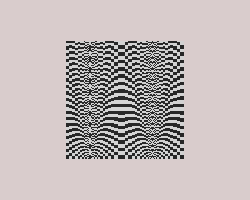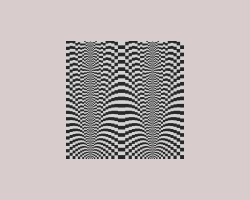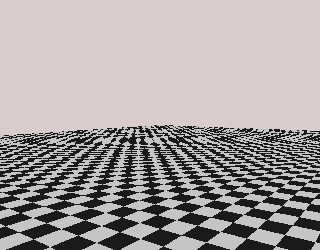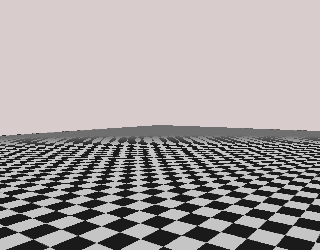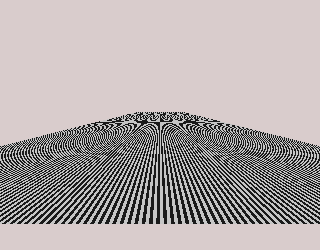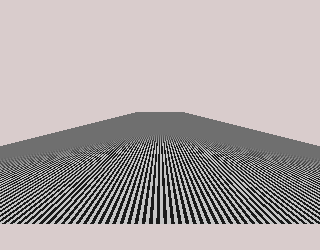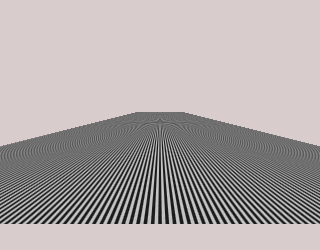Final Project Report
CSS 552 – Prof. Sung
Daniel R. Lewis
June 10, 2013
Contents
Problem Statement
In ray tracing, a ray is sent through an image pixel and intersects with the
nearest geometric surface. If that surface is textured, the texture must be
sampled to produce a value (mostly commonly a color) for the pixel. The easy
default solution is point sampling, simply picking the texel (texture pixel)
which happens to be at the intersection position. However, when the texture is
"minified" (i.e., each pixel projection covers multiple texels) and
contains high-frequency information, point sampling can result in undesirable
aliasing. The ideal solution would be to average all the texels covered by the
pixel, but since this is too expensive to do exactly, we approximate via one of
a number of techniques.
Solutions
Other than point sampling, the four most important techniques are
mipmapping, ripmapping, summed-area tables, and unconstrained anisotropic
filtering. For a good introduction to these techniques, see Akenine-Moller
et al. (2008). See the references section
for a full citation and further reading.
For my CSS 552 final project, I implemented mipmapping and
summed area tables (SATs). In the next section, we will look at the
results produced by these techniques, as well as point sampling.
Examples
Example 1
Sampling this texture (note: rotated to have
the same orientation as the rendered image, same for the rest). For the point
sampled image, note the left "stripe" that does not exist in the original
texture. Both mipmapping and SATs do better, but the latter is superior. This
example was contrived to show mipmapping at its best.
Example 2
Sampling this texture. Point sampling
results in severe aliasing in the far corner, and mipmapping does little
better: its aliasing is similar until it rapidly transitions into a blur. SAT
does best, but has obvious "ripples", called a
moiré
pattern. SAT also eliminates the "jaggies" on the nearby checker patterns;
we will discuss why in Example 5.
Example 3
Sampling this texture.
Example 4
Sampling left,
center, right. This
is the only example with non-contrived textures. The effects of antialiasing
are still noticeable. The difference with the water lilies is the most obvious.
Mipmapping was omitted from this example since it requires textures to have
2n by 2n pixels, which these do not.
| Point |
SAT |
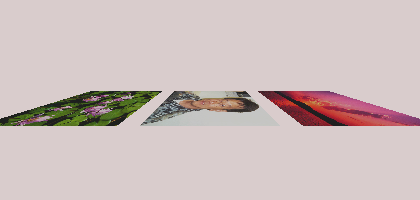 |
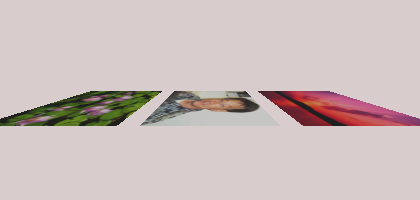 |
Example 5
SAT sampling works by constructing a bounding box around the pixel footprint
and sampling at the corners. As I mentioned in my talk, the edges of the
bounding box will fall between texel boundaries.
At left, we see the result of truncating the boundaries to integers. At
right, interpolating between the two nearest texel bounaries. The latter method
substantially improves quality. It reduces the moiré in the
distance, and it smooths away the jaggies when and where the texture is
magnified.
| SAT (no interpolation) |
SAT (interpolation) |
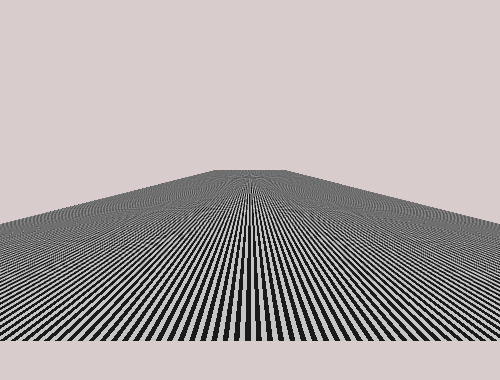 |
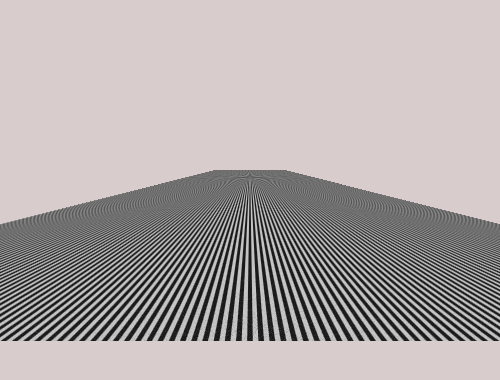 |
References
- Akenine-Moller, Tomas; Eric Haines; Naty Hoffman. Real-Time Rendering (3rd ed.). 2008.
- Blinn, Jim. “What We Need Around Here Is More Aliasing.” IEEE Computer Graphics and Applications 9.1 (1989): 75–79.
- Blinn, Jim. “Return of the Jaggy.” IEEE Computer Graphics and Applications 9.2 (1989): 82–89.
- Blow, Jonathan. “Mipmapping, Part 1.” Game Developer Magazine Dec. 2001. Link.
- Blow, Jonathan. “Mipmapping, Part 2.” Game Developer Magazine Jan. 2002. Link.
- Crow, Franklin C. “Summed-Area Tables for Texture Mapping.” Computer Graphics 18.3 (1984): 207–12. Link.
- Heckbert, Paul S. “Fundamentals of Texture Mapping and Image Warping.” Thesis. University of California, Berkeley, 1989. Link.
- Poynton, Charles. “Frequently Asked Questions about Gamma.” Link.
- Randers-Pehrson, Glenn; et al. “Gamma Tutorial.” Link.
- Salvator, Dave. “The Naked Truth About Anisotropic Filtering.” ExtremeTech 26 Sept. 2002. Link.
- Schilling, Andreas, Günter Knittel, and Wolfgang Strasser. “Texram: A Smart Memory for Texturing.” IEEE Computer Graphics and Applications 16.3 (1996): 32–41.
- Wikipedia. “Gamma correction.” Link.
- Wikipedia. “Summed area table.” Link.
- Williams, Lance. “Pyramidal Parametrics.” Computer Graphics 13.3 (1983). Link.
